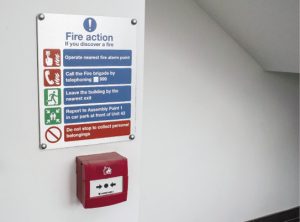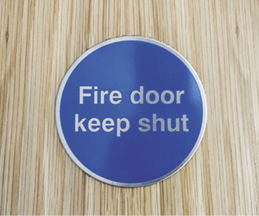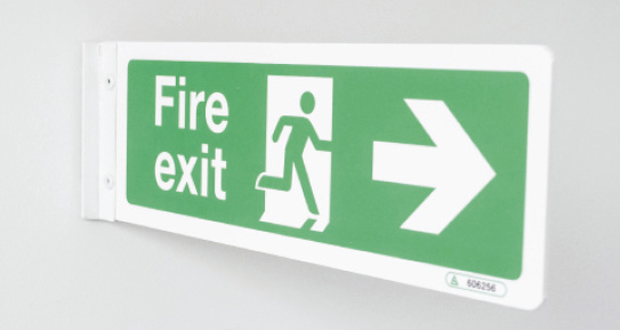Mandatory by law and essential in reducing the risk of accidents, the implementation of effective safety signage is crucial to any workplace. Danny Adamson, MD at Stocksigns looks at how compliance with the latest safety requirements can ensure a safe working environment for employees
Workplace-related accidents can be highly distressing events, particularly when serious injuries occur. While workplace fatality figures are falling, there were still 111 workers fatally injured at work in the UK between April 2019 and March 2020. Work environments come in all shapes and sizes so safety requirements will differ between locations; but to help make workplaces safer, it is crucial that companies do everything they can to promote better on-site safety.
Whether to help make a building easier to navigate or ensure first aid kits can be quickly located, effective signage has a multitude of benefits. Most notably, it serves as a constant reminder to staff about various safety protocols. One of the best ways to mitigate the risk of on-site accidents is to invest in high-quality signage. This is recommended by the Health and Safety (Signs and Signals) Regulations Act , which states that safety signage should be used where there is a significant risk to health and safety and where other methods cannot control the risk.
As such, certain signage is required by law across all businesses, regardless of size, although these may vary dependant on industry. These signs, which include smoking legislation notices, health and safety law posters and fire extinguisher signs must be displayed and clearly apparent to all on-site and must also conform to the BS ISO 7010 standard to ensure consistency. Failing to do so can lead to companies being fined, particularly if an accident were to occur.
CATEGORIES
 In general, signage is normally split into five main categories:
In general, signage is normally split into five main categories:
- Prohibition signs which prohibit actions detrimental to health and safety
- Warning signs to alert onlookers to potential risk
- Mandatory signs which require actions to ensure safety
- Safe Conditions signs that indicate exit routes
- Fire safety signs to mark the location of fire equipment
If you are in any way responsible for a business or commercial property, you must display the required signage appropriate to your industry and building. Whilst clear signage is not meant to be a substitute for proper health and safety protocols, it does help companies reduce and mitigate the risk on their premises.
The use of signs featuring pictograms can be very effective, as they help to illustrate warnings in an immediate and obvious manner and are an ideal solution to help keep non-native speakers safe. For example, pictograms are commonly used on hazard signs to alert the presence of a hazardous chemical, the dangers of using it, as well as the outcomes if not used properly. However, it is important to only specify pictogram signs that are ISO 7010 compliant as this is the technical standard which regulates the colours and symbols on hazard and safety signs and ensures messages are universal and therefore recognizable and easily understood.
A good way to ensure that signs are visible at all times is to specify photoluminescent solutions. Photoluminescent signs self-charge in ambient light, meaning that should a power failure occur or conditions mean visibility is poor, the signs will illuminate and creating a clear guide to the nearest exit or fire extinguisher. As always, it is imperative to place signs in a clear, obvious area so that they are easily visible to everyone.
INCREASED REGULATION
Health and safety regulators are permitted to conduct unscheduled checks around businesses and workplaces to ensure standards are being upheld. However, in the past, many sign-related prosecutions were reactive – only occurring once an on-site accident had already happened. For many, this enforcement approach was not rigorous enough and meant that some businesses could be operating without the proper precautions until it was too late. As identified in the Ministry of Housing, Communities and Local Government’s consultation outcome document, ‘Building a safer future’ , moving forward companies should expect “greater oversight by regulators and tougher enforcement when  things go wrong”. As such, companies which inadequately use signage across their premises should now expect more pushback from authorities.
things go wrong”. As such, companies which inadequately use signage across their premises should now expect more pushback from authorities.
This change has been further compounded by the rise of COVID-19, which has necessitated the purchase of a totally new range of signs for companies to buy and install. Since the outbreak, it is now recommended by the Government that companies display signs that remind employees and visitors of the advised hygiene methods. For example, hand washing guidance, and also to remain socially distanced and wear face coverings. With so many signs to display and only limited space to do it, the use of floor vinyl is increasing – helping companies stay compliant without overwhelming employees with information.





